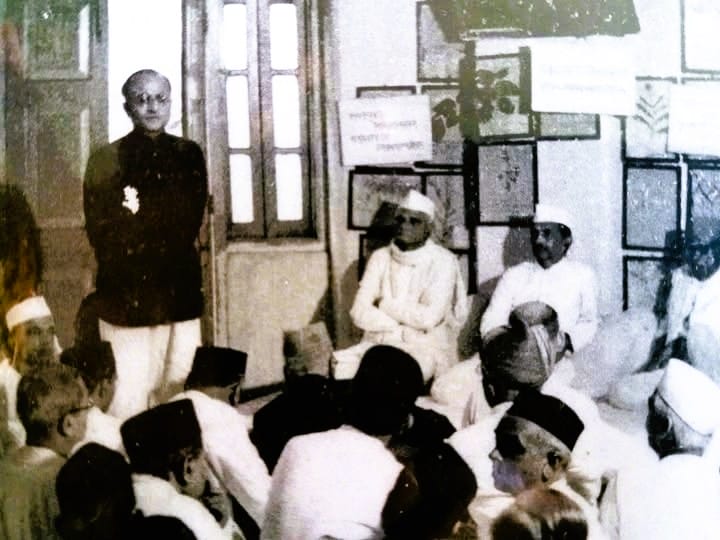By Dr. Bharat Vaidya B.A.M.S., M.D.
Owner and Founder of Ayurved Sadhana
Dean and Senior Faculty at Ayurved Sadhana
All Rights Reserved – Ayurved Sadhana Vidyalaya, Colorado – U.S.A.
"Every culture has played an important role in the upliftment of medicinal science. Rather than competition, we must try to learn from each other. It will be so useful to both health and humanity on both fronts."
- Dr. Pratapkumar Vaidya [Mumbai Vaidya Sabha - 1955]
- Dr. Pratapkumar Vaidya
In the grand chronicle of human civilization, medicine stands as one of the few disciplines that transcend geography, language, and empire. From the herbal compendiums of the Indus Valley to the surgical treatises of Sushrut, and from the Ebers Papyrus of Egypt to the Hippocratic Corpus of Greece, the universal thread of healing knowledge is unmistakable. Among the lesser acknowledged yet significantly influential players in this ancient tapestry were the Phoenicians.
Phoenicia: A Maritime Culture of Exchange
Phoenicia, the ancient Semitic-speaking civilization that flourished along the eastern Mediterranean coast (modern-day Lebanon and parts of Syria and Israel), was famed for its maritime prowess, vibrant trade networks, and cultural adaptability. While often remembered for their script precursor to the Greek and Latin alphabets, the Phoenicians were also critical transmitters of medical knowledge.
Their seafaring ventures connected them not just with the Mediterranean civilizations of Egypt and Greece, but also across the Arabian Sea to the Indus Valley civilization. The Ebers Papyrus, an Egyptian medical document dated around 1550 BCE, explicitly refers to a medical treatise from a physician of Byblos, an ancient Phoenician city who had traveled to India, Egypt, and Greece. This note is more than mere historical trivia; it is a beacon illuminating the interconnected roots of early medicine.
Medicine as a Shared Legacy: India and Phoenicia
The Indus Valley civilization (3300–1300 BCE), with its advanced public hygiene, systematic urban planning, and evidence of rudimentary surgical tools, formed one of the earliest scientific medical cultures. It is not coincidental that Phoenician traders and healers, like those from Byblos, sought interaction with India. Ayurvedic principles of tridosha (three-body humors), plant-based pharmacology, and mind-body health influenced, and were influenced by cross-cultural exchanges.
Whereas Indian medicine developed in the context of Dharma and cosmic harmony, Phoenician medical knowledge was closely tied to religious deities. Deities, considered gods of medicine and oracles, were invoked for healing, not unlike the later Greco-Roman practice of consulting the oracles of Asclepius. Certain gods symbolized both pestilence and cure, reinforcing the dual understanding of disease and remedy inherent in ancient thought.
Influence on Greek Medicine
Greek medicine, often perceived as the bedrock of Western medicine, was itself a syncretic tradition absorbing Egyptian, Mesopotamian, Phoenician, and Indian ideas. The Hippocratic emphasis on balancing bodily humor echoes the tridosha concept of Ayurveda. Moreover, the presence of Phoenician healers in pre-Hellenic lands facilitated the transmission of diagnostic and therapeutic methods long before these were codified in Greek texts.
Despite these differences, the traditions shared a reverence for the healer’s role, the therapeutic use of herbs and minerals, and an understanding of disease as an imbalance, whether physical, divine, or environmental.
Contrast in Form, Unity in Purpose
Indian Medicine (Ayurveda) and Phoenician Medicine, though born of different civilizations, reveal distinct paths toward understanding health, spirit, and the cosmos.
In cosmology, Ayurveda is rooted in Vedic philosophy built upon the doctrines of Tridosha and Panchamahabhuta (the five elements) expressing harmony between matter and consciousness. Phoenician Medicine, by contrast, was tied to the consultation of divine oracles, blending medicine with their sacred prophecy.
In transmission, Ayurveda evolved through the Guru Shishya Parampara, an unbroken lineage of oral and written teachings. Phoenician Medicine spread through maritime routes, diffusing its practices across cultures and coasts.
In focus, Ayurveda emphasizes internal balance, seasonal and dietary discipline, and the holistic unity of body, mind, and environment. Phoenician traditions leaned on external divine intervention, magical-religious healing interwoven with emerging rational observation.
In legacy, Ayurveda stands codified in enduring classics such as the Charaka Samhita and Sushruta Samhita and so many others, forming a continuous and living medical tradition. Phoenician Medicine, however, survives only in fragments, echoed faintly through Egyptian, Biblical, and Mediterranean references.
Toward a Harmonious Medical Future
The history of Phoenician and Indian medical exchange reminds us that medicine was never meant to be proprietary. It evolved collaboratively, through observation, dialogue, and exchange. Today’s global health challenges, pandemics, chronic diseases, and mental health crises reaffirm the need for universal collaboration.
Rather than asserting dominance of one system over another, we must celebrate the shared foundations of our healing traditions.
As Dr. Pratapkumar Vaidya at the Mumbai Vaidya Sabha in 1955 said,
“Every culture has played an important role in the upliftment of medicinal science. Rather than competition, we must try to learn from each other. It will be so useful on both health and humanity both fronts.”
– Dr. Pratapkumar Vaidya
Let us remember the Phoenicians not just as traders of purple dye or inventors of the alphabet, but also as quiet messengers of medical wisdom sailing across the seas to exchange knowledge that could heal.
Mentions:
- Ebers Papyrus (c. 1550 BCE), Egypt
- Archaeological records from Byblos and Mohenjo-Daro
- Charaka Samhita and Sushruta Samhita, India
- Phoenician inscriptions and Biblical accounts
- Dr. Pratapkumar Vaidya- Mumbai Vaidya Sabha, 1955
Below, see a rare photo of Mumbai Vaidya Sabha at Prabhuram Ayurvedic College, Bombay

A rare photograph featuring Dr. Pratapkumar Popatbhai Vaidya, along with eminent Ayurvedic scholars including Vaidya Jadavji Trikamji Acharya, Vaidya Phulabhai Mathurbhai Patel, Vaidya Someshwar Bhatt, Vaidya Indulal Yagnik, and other distinguished members of the Ayurvedic fraternity.
This gathering took place at the Mumbai Vaidya Sabha, hosted at the historic Prabhuram Ayurvedic College, Mumbai an institution founded in honor of Vaidya Prabhuram Jivanram Vaidya, one of India’s earliest pioneers of modern Ayurvedic education and research.
SIGN UP TODAY FOR AYURVED SADHANA NEWSLETTER!
CHECK OUT OUR OTHER BLOGS:
All rights reserved by Ayurved Sadhana Vidyalaya,Dr. Bharat Vaidya and Anupama Vaidya. Do not distribute or publish this material.





